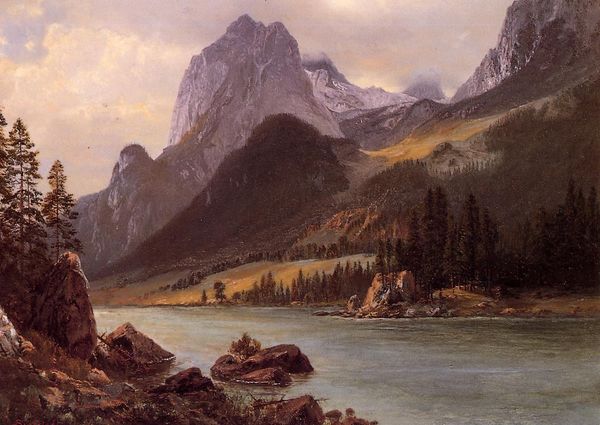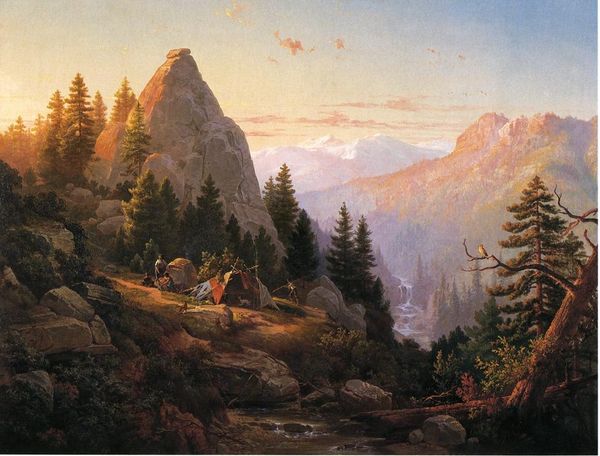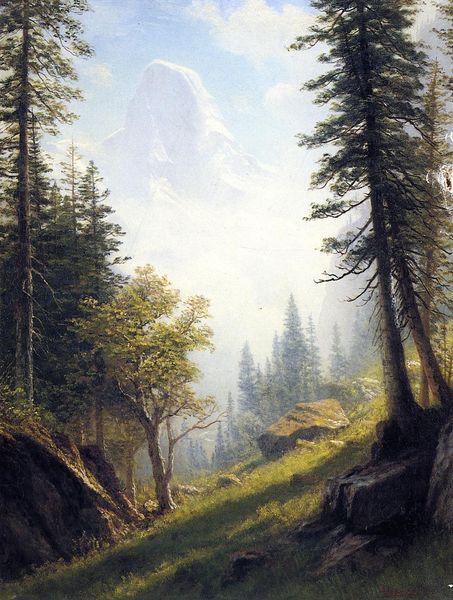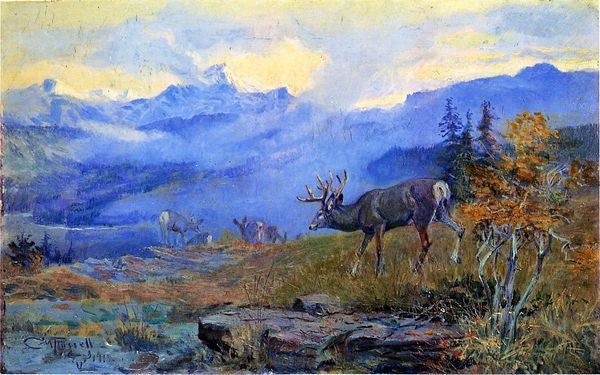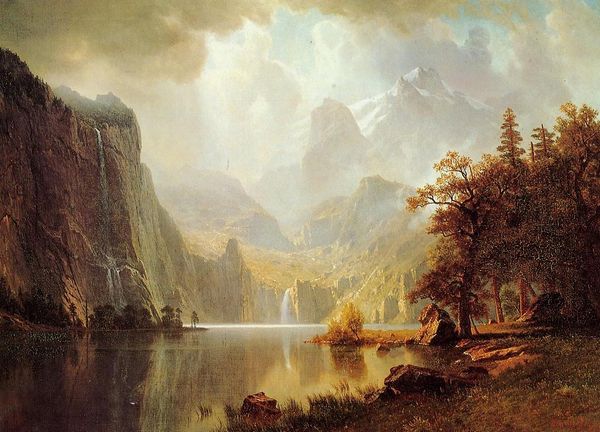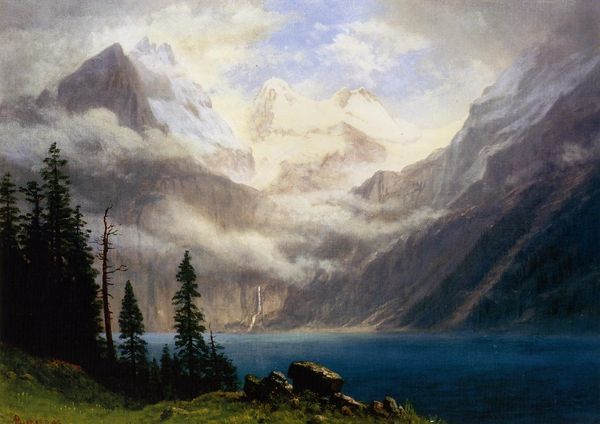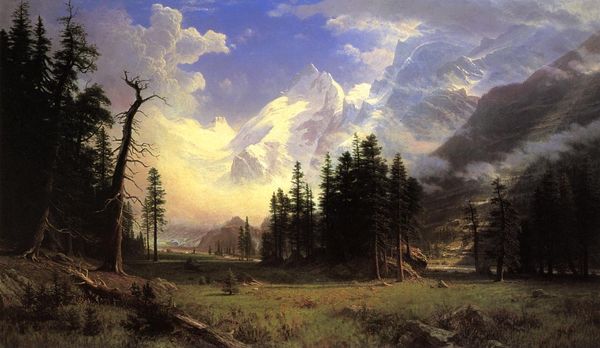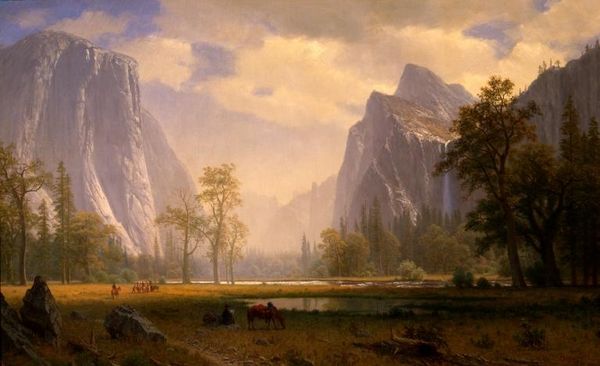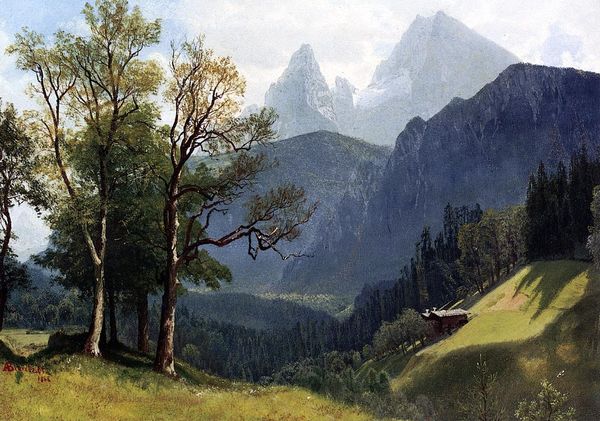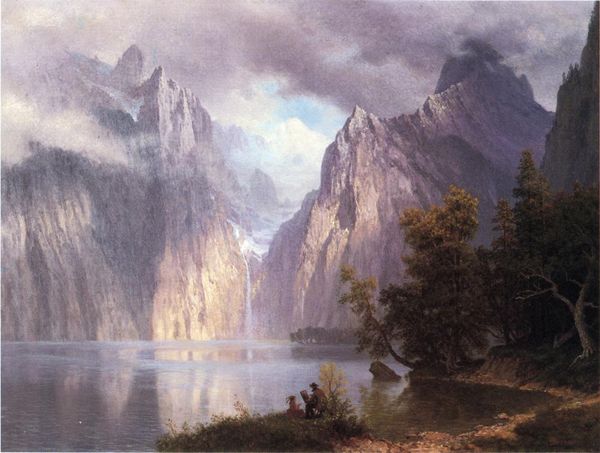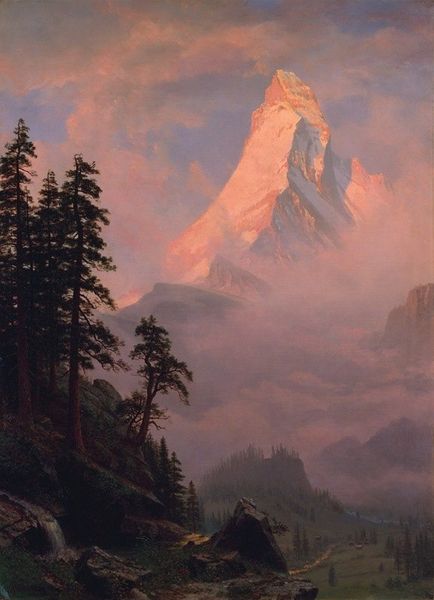
painting, oil-paint
#
painting
#
oil-paint
#
landscape
#
waterfall
#
river
#
figuration
#
forest
#
romanticism
#
mountain
#
hudson-river-school
#
water
#
realism
Dimensions: 48.9 x 34.29 cm
Copyright: Public domain
Curator: This work, "Call of the Wild," thought to be crafted in oil paint by Albert Bierstadt, pulls us into a scene of dramatic wilderness. What's your first impression? Editor: The grandeur! The painting feels romantic in its vision of an untouched landscape, almost theatrical. The lone elk emphasizes a sense of majestic solitude. Curator: Bierstadt, aligning with the Hudson River School's principles, certainly portrays nature's sublimity. One must consider the specific type of oils used, the texture applied to create those imposing mountains, and how those material choices shape our perception. Think about the industrial availability of pigments at this time too. Editor: Absolutely. This era also reflects a pivotal moment in American expansion and industrialization. How did such romanticized depictions of the frontier fuel both preservationist movements and the concept of manifest destiny? Curator: I'm intrigued by Bierstadt’s brushwork. The detail in the foreground grasses compared to the looser rendering of the distant peaks is striking. What did the labor involved in creating those minute details tell us about artistic ideals? Editor: I agree, this idealized vision comes into sharper focus if we explore how institutions displayed, and audiences interpreted such representations of the American West, particularly when considering land ownership and native populations. How might the painting's accessibility shaped public attitudes and colonial perspectives about nature, settlement, and nationhood? Curator: Examining the manufacturing and accessibility of artists’ supplies could also unlock insight on consumerism patterns and broader social hierarchies involved in appreciating works of this scale. Editor: Yes, the very display of these paintings in grand halls speaks to the values of the collectors and patrons! It's far from a neutral representation; rather, a carefully constructed visual narrative of the American ideal. Curator: This landscape, therefore, can't simply be "read" but also unpacked, accounting for the production choices involved in manifesting the landscape we see here today. Editor: Exactly, "Call of the Wild" echoes grand historical dialogues while beckoning critical evaluation. Its artistry makes us ponder about land, resources, and cultural legacies.
Comments
No comments
Be the first to comment and join the conversation on the ultimate creative platform.
